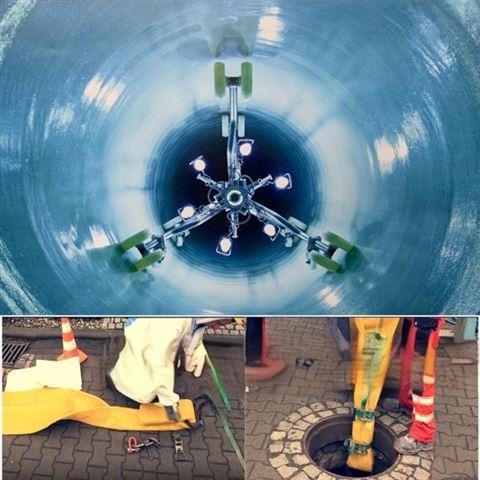
Cured-In-Place Pipe (CIPP) Technology: An In-Situ Rehabilitation Method
The CIPP (Cured In Place Pipe) is also known as the in-situ curing method. Is the principle of resin heating or ultraviolet light curing, in the case of the resin hose using water pressure or air pressure to the pipe, and then to the pipe heating water or steam heating, curing the resin inside the pipe, in the original damaged pipe to form a new "pipe tube" of a new and efficient pipe repair process. The formation of inner pipe can be only in a few hours to put into normal use. CIPP pipe repair process does not need to destroy the pavement because of short construction time, less road occupation and little impact on traffic, corrosion resistance, excellent quality and long service life have become the repair technology for extensive promotion and use of urban water supply and drainage pipe repair in China.
Principle of Operation
1. Preparation of the Host Pipe: The existing damaged pipe is thoroughly cleaned using high-pressure water jetting or mechanical cleaning techniques to remove debris, roots, and scale, ensuring optimal adhesion of the new liner.
2. Installation of the Liner: A flexible resin-saturated tube, typically made of fiberglass or polyester, is inserted into the cleaned host pipe. This insertion can be achieved through various methods, including inversion or pulling.
3. Curing Process: The curing of the resin is a pivotal aspect of the CIPP method:
Hot Water or Steam Curing: In this method, water at high temperatures is circulated through the liner, causing the resin to harden and bond to the inner walls of the existing pipe.
UV Light Curing: An alternative approach involves using ultraviolet light to cure the resin, allowing for a faster process and often enabling continuous service of the pipeline.
4. Finalization: Once the curing process is complete, the new pipe is inspected using cameras to ensure integrity and performance. Any necessary reinstatement of service connections is performed, and the pipeline is returned to service.
Advantages of CIPP
* Minimal Disruption: CIPP's trenchless nature means that extensive excavation is not required, significantly reducing surface disruption, preserving pavements, and minimizing impacts on traffic flow.
* Rapid Installation: The entire process, from initial cleaning to curing, can often be completed within a single day, allowing the rehabilitated pipe to be placed back into service within hours.
* Durability and Corrosion Resistance: The materials used in CIPP are resistant to corrosion and chemical degradation, extending the lifespan of the rehabilitated pipeline, which can exceed 50 years.
* Cost-Effectiveness: By minimizing the need for excavation and reducing labor and material costs, CIPP presents a cost-effective alternative to traditional pipe replacement methods.
Application of CIPP
1. Sewer Systems: Repairing cracked, leaking, or root-infested sewer lines.
2. Stormwater Drains: Enhancing the structural integrity and flow capacity of stormwater systems.
3. Water Supply Lines: Restoring aging potable water pipes to maintain service quality.
can not be empty
can not be empty
